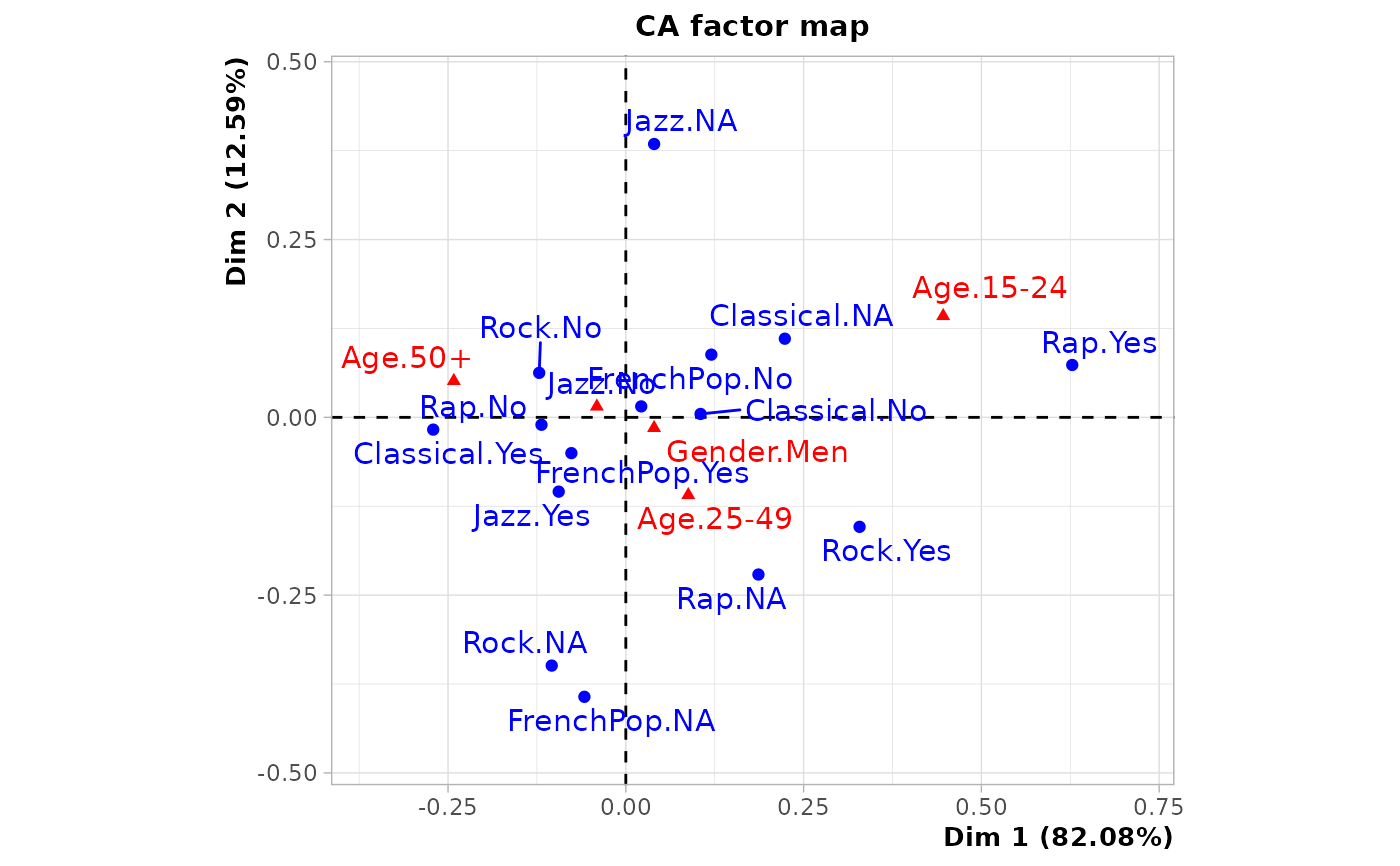Coinertia analysis between two groups of categorical variables
coiMCA.RdCoinertia analysis between two groups of categorical variables
coiMCA(Xa, Xb,
excl.a = NULL, excl.b = NULL,
row.w = NULL, ncp = 5)Arguments
- Xa
data frame with the first group of categorical variables
- Xb
data frame with the second group of categorical variables
- excl.a
numeric vector indicating the indexes of the "junk" categories in
Xa(default is NULL). Seegetindexcator useijunkinteractive function to identify these indexes. It may also be a character vector of junk categories, specified in the form "namevariable.namecategory" (for instance "gender.male").- excl.b
numeric vector indicating the indexes of the "junk" categories in
Xb(default is NULL). Seeexcl.aargument.- row.w
numeric vector of row weights. If NULL (default), a vector of 1 for uniform row weights is used.
- ncp
number of dimensions kept in the results (by default 5)
Details
Coinertia analysis aims at capturing the structure common to two groups of variables. With groups of numerical variables, it is equivalent to Tucker's inter-battery analysis.
With categorical data, it consists in the following steps :
1. Transformation of Xa and Xb into indicator matrices (i.e. disjunctive tables) Xad and Xbd
2. Computation of the covariance matrix t(Xad).Xbd
3. CA of the matrix
Value
An object of class CA from FactoMineR package, with an additional item :
- RV
the RV coefficient between the two groups of variabels
References
Tucker, L.R.. (1958) An inter-battery method of factor analysis. Psychometrika, 23-2, 111-136.
Dolédec, S. and Chessel, D. (1994) Co-inertia analysis: an alternative method for studying species-environment relationships. Freshwater Biology, 31, 277–294.
